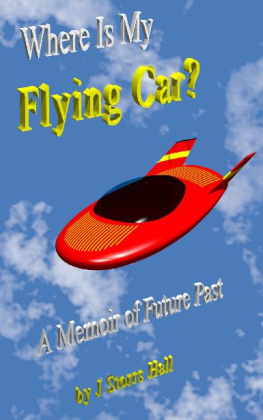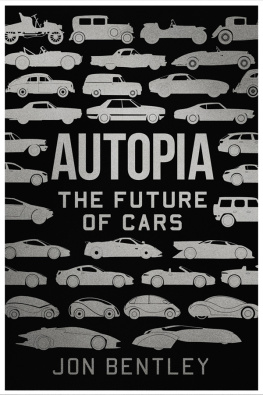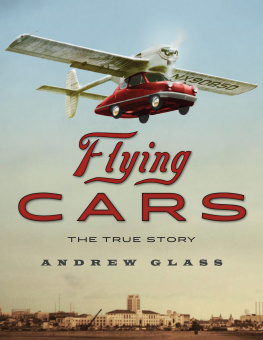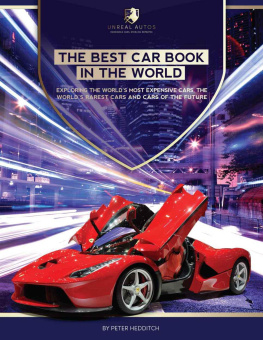Preface
Dallas/Fort Worth Intl (KDFW) is currently experiencing departure delays of 16 minutes to 30 minutes (and increasing) due to taxiway congestion.
How is everybody else affected? View the MiseryMap .
flightaware.com
I am sitting in the airport in San Francisco, waiting for my flight home. Getting up early was no problem: Ive woken up every day this trip before 5:00 AM, which was still 8:00 to my jet-lagged body. So I showered considerably longer than I would like the Sunnyvale Water Authority to know about, luxuriated over a breakfast of rubber sausages and industrial scrambled eggs, checked out, and was on the road by 7:30. Its half an hour to the airport, SFO, if you get there before the rush-hour traffic congeals Highway 101 into a fifty-mile parking lot. The San Jose airport would have been closer to my hotel, but there isnt a flight from there to where Im going at anything approaching the right time or the right price.
Once I got near SFO, I had to refuel my rental car, return it to store, and drag my luggage onto the airtrain. This is a piece of Disneyfied transport engineering that appears to combine all the disadvantages of buses, trains, and roller coasters in one vehicle. Once at the terminal, one drags the luggage through an interminable labyrinth of hallways, moving pedestrian ways, escalators, elevators, and finally the serpentine line at the airline check-in desk. That took another hour. Another half hour was invested in standing in the queue to experience the only really Twenty-first Century technology of the whole trip: the millimeter-wave radar see you nude machine. Various smaller chunks of time have been spent doing things such as the actual check-in process and walking from security to my gate. Ive walked over half a mile, dragging my luggage about half of that distance, across long stretches of tiled floor apparently designed to produce as much noise as possible from a rolling suitcase.
Ive been sitting in the gate area for about an hour, variously watching the other passengers, surfing the Web, attempting to write this introduction, and being loudly warned every five minutes that I must not park in the pick-up lanes, and that if I leave my luggage unattended, it will be confiscated or destroyed. Its nearly 11:00, and the plane is about to board. My flight is scheduled to leave in another half hour.
So far, Ive been lucky. I havent had to use the hour cushion I left in my schedule for any unforseen hitch; but as a general rule its a very good idea to have such padding in your travel plans.
Im not the only one with an upholstered schedule. As it turned out on that particular trip, our aircraft arrived late on its previous flight, so we took off half an hour behind schedule. As we approached Newark, NJ (EWR), our destination, weather had backed up air traffic so we were put in a holding pattern, flying in circles over eastern Pennsylvania, for another 20 minutes. But the airline had put so much slack in the timing that we were only 10 minutes late according to its schedule. We spent something over 5 hours in the air with the hold; from gate to gate, including waiting on the tarmac for takeoff and taxiing, it was 6 hours.
Once I landed, there was another hour involved in retrieving checked luggage and getting back to my car, courtesy of another EPCOT-style monorail. From there it is a 3-hour drive back to my eastern Pennsylvania home, directly underneath the circles we were making in the air during the hold.
The whole trip has taken, from door to door, fourteen and a half hours. My net speed, for the 2450 miles from hotel to house, was 169 mph.
The Boeing 737 I flew on has a cruising speed of 514 mph. Imagine that I had had a flying car of my own that could cruise at 500 mph. The trip would have taken less than 5 hours, a third of what it actually took. In fact I could have saved time with a flying car only half as fast as the airliner; since I was up early anyway, I could have left at 5:30 California time (8:30 EST), not flown the hundred miles past my house to New Jersey, and after ten hours in the air, gotten home some 6 hours earlier than I actually did.
If you exclude my somewhat unusual situationIm an author, after all, so I live in the archetypal cabin in the woods, far from the madding crowdadd only an hour and a half at each end of the airliner flight for the huddled masses living within an hour of a major airport. You still have a 9-hour trip, and your flying car is still better at 280 mph.
This is 75-year-old technology. Frank Fuller, Jr. won the Bendix Trophy in 1939 at an average speed of 282.098 mph. Most WWII fighter planes did over 300. In 46 a P-51 took the Bendix at 435.5 mph.
When will I be able to buy a flying car that has those kinds of speeds? The answer depends on just what you consider to be a flying car, and how much youre prepared to pay. You can get a low-end helicopter (used) in the $50,000 range, which will land on a dime, but it doesnt go much faster than your Toyota on an interstate. Moving to the $500,000 range you can get nice private planes that will get up into the neighborhood of 200; the recently certificated Cirrus personal jet gets you over 300 with a pressurized cabin (flying over the weather) for two million dollars. The problem with the jets and the planes are that they do still have to use airports, or at least landing strips; you get a major increase in choice of places and complete freedom of times as compared with commercial air travel, but its still nowhere as convenient as a car.
For shorter trips, the car advantage only gets bigger. It takes essentially a full day to fly down to visit my mother in Nashville on a commercial airline even though the actual air time is less than an hour and a half, because the feeder flights only run twice a day! In practice, I usually drive the 13-hour trip, taking two days so as to arrive without being completely exhausted, and taking the opportunity to see a sight or visit a friend along the way. But tacking two days onto each end means that the whole trip may as well be a week-long excursion.
Direct distance, as the crow flies, is 555 nautical miles. At the below-10,000-feet-altitude speed limit of 250 kts (286 mph), thats still less than two and a quarter hours.
If I had a flying car, I could afford to visit my mom once a month instead of once a year.
Fifty years ago, in the mid Sixties, we were sure we would have flying cars by now. Where are they? When will we get them, if ever? Will we get the other things science fiction and the popular technology magazines promised in the Fifties and Sixties: robots, space travel, ray guns, mechanical educators, weather control, universal libraries, rejuvenation, scientific world government, or limitless atomic power?
Technologically, we as a culture became a lot less adventurous in the past half-century. Thus, to guess what we might have done, one must venture a step or two past the limits of the known possible, and speculate on what might have been discovered or invented. This is a project fraught with epistemological peril.
This book is partly a reminiscence of what the pundits of the early and mid twentieth centurymostly science fiction writersthought the future would bring; partly an investigation about why, or to what extent, it didnt happen that way, and partly a prognostication about whether it could and under what circumstances it might come to pass after all. Thus it attempts to do something impossible. I am not an aerodynamicist nor a power engineer; not a federal regulator; not a physicist, high energy or low; not an economist, a social psychologist, nor a political scientist. I have never even









